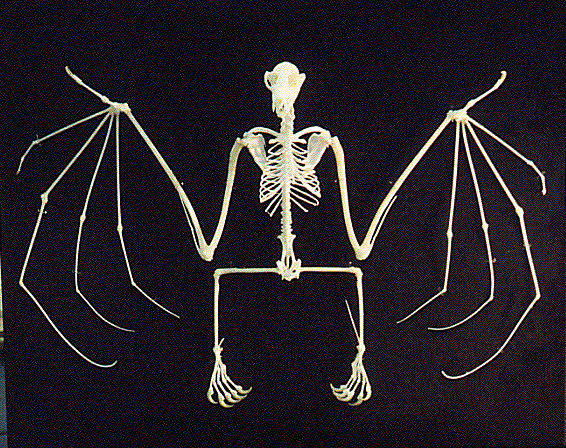


By Melissa Camacho
Teacher Notes
Missouri Grade Level Expectations:
Strand 3: Characteristics and Interactions of Living Organisms
3.1.D.a Observe and compare the structures and behaviors of different kinds of plants and animals

Concept being addressed:
Students will be able to observe the skeletal structures between birds wings and bats wings and compare and contrast them. They will also be able to comprehend the anatomy of bats and birds using pictures provided by the teacher.
Activities to teach the concept exploration:
The students will be tested on their prior knowledge about bats using a K-W-L chart. The teacher will write their answers on the chart paper. The students will then draw a picture on what they know about the structures of bats and birds. The students will observe bats and birds wings using real life pictures provided by the teacher.
Data collected during the activity exploration:
The students will be in groups to discuss and compare the pictures they drew on what they know about bats and birds and share their ideas with the teacher. The teacher will chart their ideas. The teacher will ask the students if they think the bats wings are the same as the birds wings. The students will also look at the real life skeletal pictures of bats and birds and discuss within their groups. Then the students and the teacher will get together to construct a Venn Diagram of the similarities and differences of bats and birds skeletal wing structures.
How data is being used to derive the concept introduction:
While discussing the similarities and differences of the animals, the students will construct their own skeletal structures of a bat and a bird using toothpicks to observe the structures of the skeletal wings. They will discuss their observations with the teacher and talk about their predictions. They will also discuss the differences of their predictions and the observations of the skeletal structures of bats and birds.
Extended activity used to apply the concept application:
While in groups, the teacher will have the students observe the skeletal hand-wing structures of bats and the skeletal structures of a human hand. The teacher will have the students hold up their hand and observe the fingers of their hand and compare it to the hand-wings of bats. The students will discuss and chart their observations on chart paper. Then the students will make a bat with the skeletal human hands. The teacher will then have the students close their eyes and pretend they are bats and use their hands to move around the room to relate to the concept that their own hands are also almost similar to bats.


Materials:
6 toothpick boxes, one for each group
24 glue
construction paper
drawing paper
chart paper
pictures of the skeletal structures of bats and birds
History of the concept:
There are many misconceptions about bats. Bats are warm, blooded mammals that bear live young, once a year. Bats can be distinguished from all other mammals, especially birds, by having true wings and being capable of flight. Bats belong to the order Chiroptera, which has nearly 925 species. There are also two suborders from this group, the Microchiropterans and Megachiropterans.
Related Websites:
http://www.sdcoe.k12.ca.us/score/stella/stellatg.html
http://www.ed.uniuc.edu/YLP/96-97_mini_units/Bats_MClaeys/bat.html
http://www.nps.gov/bad1/teacher/skeletons.htm
Reference:
Krantz, Patrick D., Barrow, Lloyd, H., (2003). Flying through the Standards with bats. Science Activities, v39, p29-33